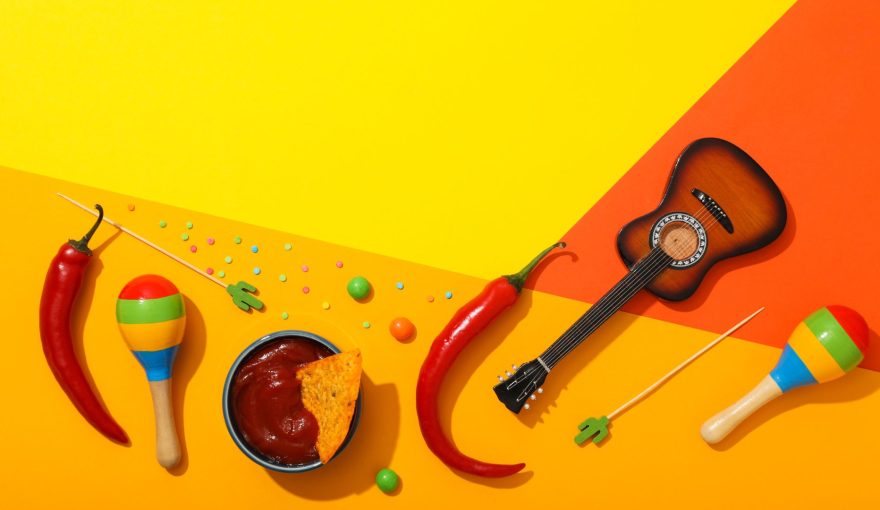The Role of Music and Dance in the Latin American Gastronomic Experience: A Symphony of Flavors and Movements
In the cultural richness of Latin America, gastronomy cannot be understood solely through the palate; it is deeply intertwined with music and dance, forming a complete sensory experience that transcends simple eating. At Azúcar Restaurant, we believe that each dish tells a story and that pairing it with the right music and movements enriches that narrative, creating memorable moments that celebrate our traditions.
Music as the Soundtrack of the Table
From the vibrant rhythms of Cuban son to the cadence of Argentine tango, music in Latin America is more than an accompaniment; it is an element that awakens emotions, memories, and deep connections. At family gatherings and traditional festivities, music accompanies every stage of the meal: from preparation in the kitchen to the moment the dish is shared at the table. Melody helps create a warm and welcoming atmosphere, facilitating conversation and strengthening bonds between diners.
For example, in countries like Mexico and Peru, celebrations often feature a playlist that includes live or recorded music, allowing the flavors to blend with the sounds of traditional instruments like the guitarrón, the charango, or the marimba. These sounds, full of history and meaning, elevate the culinary experience, making each bite part of a ritual that honors cultural roots.
Dance as an expression of identity and celebration
Dance in Latin America is not only an art form but a means of expression that reflects identity, traditions, and collective sentiments. In the context of gastronomy, dance traditions are often an integral part of festivities and gatherings, where food and dance are intertwined in a shared celebration.
An emblematic example is the cueca in Chile or the cumbia in Colombia, where the dancers’ movements complement the preparation and consumption of traditional foods. In many communities, traditional cooking sessions are accompanied by dances that invite everyone to participate, fostering a sense of community and belonging. The energy and rhythm of dance bring dynamism to the gathering, making each encounter a multisensory experience in which sight, hearing, and taste come together to celebrate culture.
The Role of Traditions in Family Reunions and Festivities
In many Latin American cultures, family gatherings and festivities such as fairs, carnivals, or religious celebrations are marked by the integration of music and dance around food. During these occasions, not only is a special menu shared, but there is also an atmosphere of joy and communion, where music and dance movements facilitate the expression of ancestral feelings and traditions.
For example, in Mexico, Christmas parties are often accompanied by carols and traditional dances, while in Brazil, samba during Carnival celebrations merges with traditional foods such as feijoada, creating a complete cultural spectacle. At these celebrations, music and dance not only complement the food but also reinforce the sense of identity and cultural continuity.
At Azúcar Restaurant, we recognize that the true Latin American experience goes beyond flavor: it is a meeting of the senses, where music and dance play a fundamental role in the celebration of our traditions. The combination of flavors, sounds, and movements creates a unique atmosphere, inviting diners to immerse themselves in the magic of our culture and experience an authentic and enriching gastronomic experience.We invite you to visit our restaurant and discover how, in every dish, in every note, and in every dance step, we celebrate the history and soul of Latin America. Because at Azúcar, every meal is a journey, every flavor a discovery, and every gathering a celebration of life.






